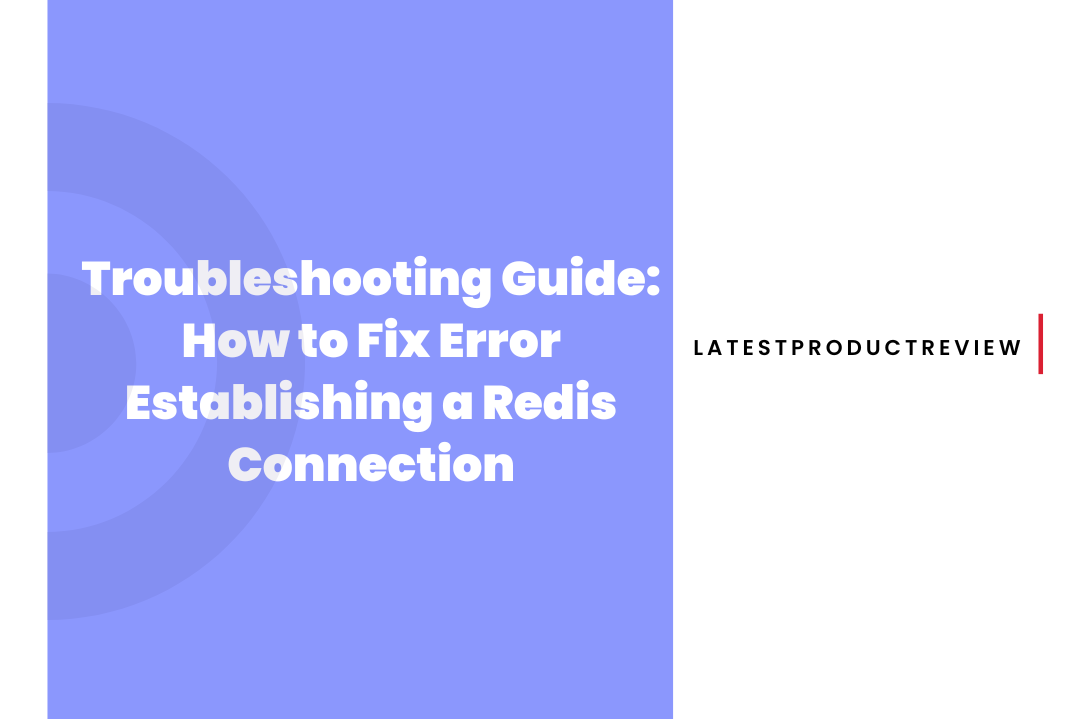In the realm of data management, Redis stands out as a widely adopted in-memory data store, empowering applications with swift data retrieval and enhanced performance.
However, even this robust system is not immune to occasional hiccups, one of which is the perplexing “error establishing a Redis connection.”
If you’ve encountered this enigmatic error, fret not, for this comprehensive guide will navigate you through a series of troubleshooting steps, ensuring a seamless Redis connection and uninterrupted data access.
Check Redis configuration files
At the heart of troubleshooting the “error establishing a Redis connection” enigma lies a thorough examination of the Redis configuration files.
These files hold the keys to Redis’s inner workings, dictating its behaviour and interactions with the outside world.
Begin your investigation by scrutinizing the path specified for the socket file within the Redis configuration file. This path should precisely match the location of the socket file, ensuring a direct line of communication between Redis and its clients.
A mismatch here could lead to a frustrating dead end, preventing the establishment of a successful connection.
Next, turn your attention to the port number specified in the Redis configuration file. This numerical gatekeeper determines the specific port through which Redis listens for incoming connections.
If this number deviates from the port configured on the client side, a communication breakdown is inevitable, resulting in the dreaded connection error.
In the last, cast your gaze upon the bind address configured within the Redis configuration file. This address serves as the designated meeting point for Redis and its clients, defining the specific interface or IP address on which Redis awaits incoming connections.
A discrepancy between the bind address specified in the configuration file and the address used by the client will inevitably lead to a connection impasse.
Restart the Redis service
If restarting the Redis server does not resolve the issue, you can try restarting the Redis service. To do this, you can use the command line, the Redis configuration file, or the Redis CLI.
To restart the Redis service using the command line, open a terminal window and navigate to the Redis installation directory. Then, type the following command:
```
redis-server --service restart
```
To restart the Redis service using the Redis configuration file, open the `redis. conf` file and locate the `daemonize` directive. Set this directive to `yes` and save the file. Then, restart the Redis server by typing the following command:
```
redis-server
```
To restart the Redis service using the Redis CLI, connect to the Redis server and type the following command:
```
CONFIG REWRITE
```
After restarting the Redis service, check the Redis logs for any errors that may have caused the service to stop. The Redis logs are located in the `redis.log` file. If you find any errors in the logs, you can take steps to resolve them and prevent the Redis service from stopping again.
Update Redis
If updating your Redis configuration and restarting the service doesn’t resolve the issue, you may need to update Redis to the latest version. To do this, follow these steps:
1. Back up your existing Redis data. This is important in case the update process fails and you need to roll back to the previous version.
2. Download the latest version of Redis from the official website.
3. Unzip the downloaded file and copy the contents to the Redis installation directory.
4. Stop the existing Redis service.
5. Start the new Redis service.
6. Test the Redis connection to make sure it is working properly.
If you are still experiencing the error “error establishing a Redis connection” after updating Redis, you may need to contact your Redis support team for further assistance.
Check for conflicting software
Check for Conflicting Software
Another potential cause of the “error establishing a Redis connection” issue is conflicting software. Here are a few things to check:
Check if you have any other software running on the same port as Redis.To do this, run the following command:
```
netstat -an | grep 6379
```
If you see any other processes listening on port 6379, you will need to stop them or change the Redis port number.
Disable any security software or firewalls that may be blocking the Redis port. Some security software and firewalls can block the Redis port, preventing connections from being established. Try disabling these programs and see if that resolves the issue.
Check if there are any other VPSs on the same server that are using Redis. If you are running multiple VPSs on the same server, it is possible that another VPS is using the same Redis port. Check the configuration of each VPS to make sure that they are using different ports.
Check if there are any other applications or services that are using the same Redis instance. If you are running multiple applications or services that are using the same Redis instance, it is possible that one of them is causing the error.
Try stopping each application or service and see if that resolves the issue.
Check if all the nodes in a Redis cluster are running properly. If you are using a Redis cluster, make sure that all the nodes are running properly. You can do this by running the following command:
```
redis-cli -c -h info
```
If any of the nodes are not running, you will need to start them.
By following these steps, you can check for conflicting software that may be causing the “error establishing a Redis connection” issue. If you are still experiencing issues, you may need to contact Redis support for further assistance.
Contact your hosting provider
If you have tried all of the other troubleshooting steps in this guide and you are still unable to resolve the error, it is time to contact your hosting provider. Be sure to provide them with the error message and the steps you have taken to troubleshoot the issue.
If you are using a managed Redis service, they may be able to provide you with some specific recommendations or troubleshooting steps. They will be able to access the resources and tools necessary to identify the root cause of the problem and provide you with a solution.





